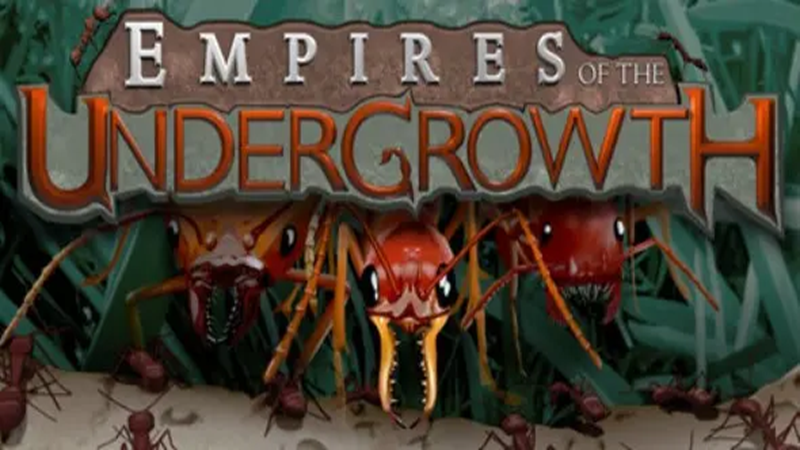Ants may be small creatures, but in the strategy gaming world, they have taken center stage in one of the most unique real-time strategy (RTS) games ever created. Empires of the Undergrowth offers a captivating journey into the complex and competitive life of an ant colony. Developed by Slug Disco Studios, this game combines biology, tactical warfare, and colony management, resulting in an immersive experience unlike any other.
In this article, we’ll take a deep dive into the gameplay mechanics, development story, reception, and the potential future of Empires of the Undergrowth. Whether you’re a strategy game enthusiast or someone curious about the insect world, this guide offers a thorough look at a title that has carved out its own niche in the genre.
A Unique Concept in the RTS Genre
Most real-time strategy games rely on human warfare, fantasy battles, or sci-fi settings. However, Empires of the Undergrowth shifts the battlefield underground and into the natural world. Players assume the role of a formicarium keeper—a scientist studying and evolving a colony of ants. The game offers an enthralling mix of natural simulation and strategic combat as players dig tunnels, gather food, raise an army, and fight off predators or rival ant species.
Key Gameplay Elements
-
Tunnel Construction: Players manually dig through dirt tiles to expand the colony.
-
Resource Management: Food is the currency used to hatch new ants and upgrade the colony.
-
Combat Strategy: The game features battles with spiders, beetles, rival ants, and other insects.
-
Upgrades and Evolution: Multiple ant species are unlockable, each with unique traits such as rapid reproduction, powerful jaws, or venomous stings.
This blend of RTS gameplay with biological authenticity sets Empires of the Undergrowth apart from traditional strategy games.
Campaign and Storytelling
Formicarium Mode
The campaign in Empires of the Undergrowth is structured around the Formicarium, a lab-based colony that you evolve over time. As you complete missions, you earn “royal jelly,” which is used to upgrade your home colony. The scientists in the background add narrative depth through voice-acted commentary, describing the colony’s progress and challenges.
Each mission introduces a new ant species or ecological scenario. You might find yourself defending against waves of amphibious crabs on a tropical beach or navigating the cold tunnels of a forest floor. These varied missions add environmental challenges and force you to adapt your strategy accordingly.
Natural History Meets Fiction
While the game is grounded in real-world ant behaviors and biology, it also takes creative liberties to create more dramatic and fun gameplay. Some battles are scaled up in size and intensity for entertainment purposes, offering a perfect mix of education and excitement.
Game Mechanics and Ant Species Diversity
Playable Ant Colonies
One of the game’s most praised aspects is the diversity of ant species. Each one behaves differently and can be strategically utilized in different scenarios.
-
Black Ants: A general-purpose species with moderate attack and defense.
-
Wood Ants: Known for their ranged attacks, perfect for tactical positioning.
-
Leafcutter Ants: These large ants focus on farming fungus and require a unique resource management system.
-
Bullet Ants (Future Updates): Planned species with powerful bites and territorial behaviors.
The strategic depth lies in how you choose to combine these ant species. For example, you might build a front line of tank-like soldiers while ranged ants provide backup from behind.
Environmental Interactions
Players must also contend with dynamic environments. Rain floods tunnels, predators lurk in the shadows, and rival colonies try to steal resources. These mechanics introduce unpredictability and encourage players to adapt their strategies in real-time.
Visual Design and Audio Immersion
While the game is not AAA in terms of budget, its visual presentation is striking. The underground layers of soil, the shiny black armor of ants, and the writhing animations of spiders are all well-rendered. The lighting and shadows add a sense of depth and claustrophobia to the underground world.
Sound Design
From the crunching of soil to the frantic battle cries of ants, the sound design plays a critical role in immersion. The voiceovers of the observing scientists also provide levity and context, creating an atmosphere reminiscent of a nature documentary.
Multiplayer and Future Development
Planned Features
Currently, Empires of the Undergrowth is primarily a single-player experience. However, the developers have expressed interest in expanding the game to include multiplayer features, where players can pit their colonies against each other in real-time or asynchronous matches.
Mod Support and Community Involvement
The game has a growing modding community, and the developers are supportive of user-generated content. This allows for custom scenarios, new species, and gameplay tweaks, greatly enhancing the game’s longevity.
Frequent Updates
Since its early access release, Empires of the Undergrowth has received frequent content updates, showing the developers’ commitment to quality and innovation. Each update often includes new species, missions, bug fixes, and improved AI behavior.
Critical Reception and Player Community
Steam Reviews and Ratings
The game holds a “Very Positive” rating on Steam, with thousands of players praising its original concept, strategic depth, and engaging gameplay. The combination of educational value and fun makes it appealing to both gamers and science enthusiasts.
Community Engagement
The Empires of the Undergrowth community is active on Reddit, Discord, and Steam forums, sharing strategies, bug reports, and fan art. This engagement helps the developers refine the game and stay in touch with their audience.
Educational Value and Real-World Inspiration
While primarily a game, Empires of the Undergrowth also offers educational benefits. Players can learn about:
-
Ant colony behavior
-
Ecosystem dynamics
-
Predator-prey relationships
-
Resource distribution in nature
The in-game encyclopedia and scientific commentary make it suitable for younger audiences, biology students, or even teachers looking to incorporate interactive tools into the classroom.
Why Empires of the Undergrowth Stands Out
In an industry full of repetitive titles and genre clones, Empires of the Undergrowth offers a breath of fresh air. It teaches players to respect the complexity of life that exists just beneath our feet. Every decision—from where to place food stores to when to launch an attack—matters. This micro-scale warfare holds as much strategic weight as any large-scale human battlefield.
The game also serves as a reminder of how nature often outmatches fiction in terms of creativity. Ants, which are usually seen as simple insects, are revealed here as powerful strategists and tireless workers, building entire civilizations beneath the soil.
Tips for New Players
If you’re just starting out with Empires of the Undergrowth, here are a few beginner tips:
-
Plan Your Layout: Don’t dig too fast. A poorly organized tunnel system can lead to chaos.
-
Balance Your Army: Don’t overinvest in one type of ant. Use a mix for defense and offense.
-
Watch the Environment: Keep an eye on the surface. Many dangers can wipe out your colony quickly.
-
Use Pheromone Markers: These help control your army’s movements with precision.
-
Adapt and Evolve: Each mission requires a different strategy. Be ready to change tactics.
Conclusion: The Hidden Majesty of the Microscopic World
Empires of the Undergrowth is more than just a game—it’s a celebration of natural intelligence and survival tactics. Its successful fusion of science, simulation, and strategy proves that even the smallest creatures can offer some of the most compelling stories in gaming.
Whether you’re a seasoned RTS veteran or new to the genre, Empires of the Undergrowth delivers a fresh and rewarding experience. It invites players to crawl into the world of ants and emerge with a newfound respect for their strength, intelligence, and coordination.
In an age where most games try to outdo each other with size and spectacle, Empires of the Undergrowth turns inward—into the soil, into the shadows—and proves that true greatness often comes from the underground.

